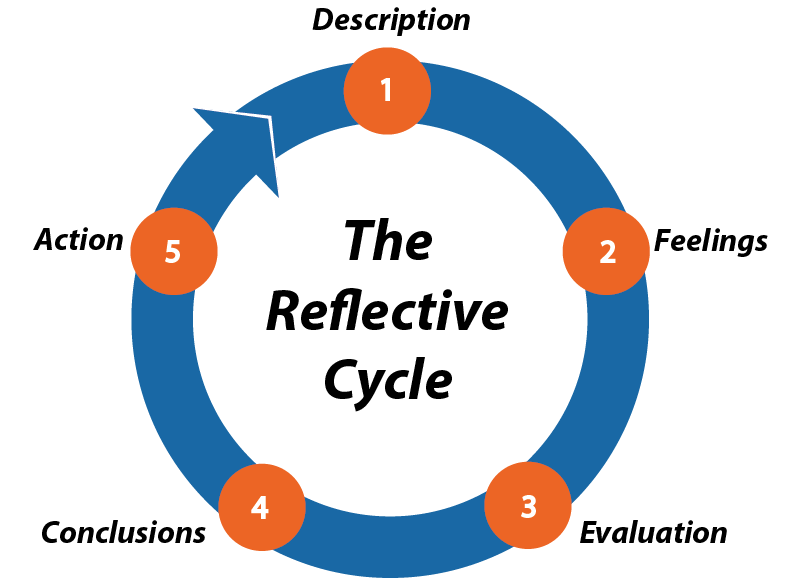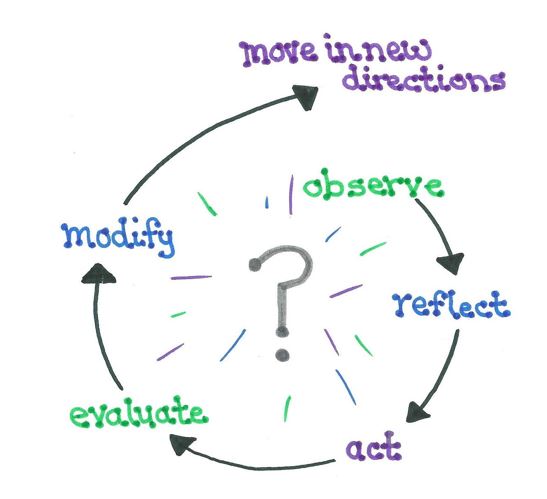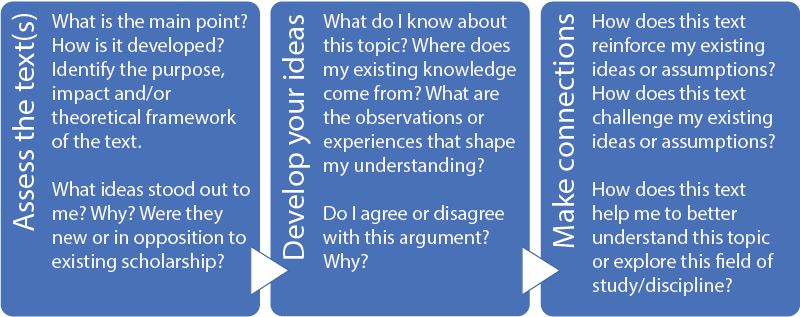17 Reflective Writing
In this type of writing, your instructor wants to see that you are making personal connections between the course content and experiences in your life. Reflective writing is inextricably linked to critical thinking.
Like discussion board posts, reflective writing uses first person pronouns, and writers are encouraged to support opinions and analysis by referring to personal experiences.
Formal reflective writing assignments differ from discussion board posts by being longer and more detailed. Also, instructors usually want you to use APA formatting (correct font, spacing, indentation, and title page). You may be specifically required to paraphrase and cite information from secondary sources.
Learning Objectives
After you complete this chapter, you will be able to
- describe the purpose and structure of a reading reflection assignment
- describe the purpose and structure of an experiential reflection assignment
Formal Reflective Writing Assignments
Self-reflection is a humbling process. It’s essential to find out why you think, say, and do certain things…then better yourself.
– Sonya Teclai (recording artist)
Watch this brief video to get a general overview of reflective writing[1]:
Incorporating the 4Rs for Indigenous Ways of Knowing in your Reflection
At Confederation College, we acknowledge the value and legitimacy of Indigenous ways of knowing, and we encourage students to incorporate the “four Rs” into their reflective writing responses. This approach values the individual’s experience, as well as the ideas of others. In this way, knowledge is seen as ongoing, changing, and interrelated [2].
In Indigenous cultures, critical thinking includes these four parts when analyzing new information:
| Reflection | Clearly articulate your thoughts and beliefs on a topic. |
| Respect | Recognize and respect people’s diversity, demonstrate an openness to and appreciation for the experiences and viewpoints of others, and demonstrate a willingness to learn. |
| Realization | Synthesize new information with original knowledge and position and arrive at a more informed and respectful position. |
| Responsibility | Integrate conclusions in planning for meaningful actions and decisions and demonstrate social responsibility and a willingness to contribute to your community. |
Two Types of Reflective Writing Assignments
1. Reading Reflection
In this type of reflective writing assignment, you will need to review course materials (read an article or chapter or watch a video or movie) and write a response.
Your response should
- demonstrate your understanding of the reading by providing a concise summary using your own words
- make thoughtful and balanced assessment of the materials you’ve reviewed
- make connections between the course materials and your own experiences and/or to other sources of information on the topic
-
identify lack of knowledge or personal bias without fear of losing marks; this is part of the reflection process
-
recognize opinions that you may not agree with, and consider these with respect
- consider how what you’ve learned from the course materials has changed or confirmed your previous thinking about a topic
- identify steps you may take to add to your understanding of this topic
- end with a conclusion that explains how you will use the knowledge you have acquired

Description: These are the details about your writing topic. What happened? When? Where? Why?
Feelings: Describe the emotions, thoughts, and responses you felt and thought towards this topic. Often emotions are evidence of our own discomfort, lack of knowledge, or bias towards the topic.
Evaluation: Compare your previous knowledge of this topic with the new knowledge or experience. Where did you get your information from? Consider the new details and their relation to your previous knowledge
Conclusions: Identify new views and ideas; develop questions for future examination.
Action: Identify changes in your approach or actions towards this topic. For example, more research, more practice, discussion with others, etc.
Steps to complete a reading reflection
Critical reflection requires thoughtful and persistent inquiry. Although basic questions like “what is the thesis?” and “what is the evidence?” are important to demonstrate your understanding, you need to interrogate your own assumptions and knowledge to deepen your analysis and focus your assessment of the text. In your reflection, you may choose to focus on one part of the reading, rather than the entire article.
-
Summarize the most important information from the assigned reading, video or audio. Concisely explain the topic and the most important details, not all of the small examples.
In this video, Shaun Macleod explains the essentials to writing a summary[3]:
2. Reflect on the article by assessing the text, developing your ideas, and making connections:
Identify where your ideas originated from; you may include personal experiences, cultural beliefs, APA-cited facts, etc. Use paraphrases to demonstrate your understanding of the material that you read or watched. Include APA documentation style to cite ideas from the source. You are encouraged to write about your own experiences and knowledge about the topic. You may or may not have APA citations for this part.
2. Experiential Reflection
In this type of reflective writing assignment, you will need to participate in an experience, like a lab or placement, and write a response. This type of writing is often used in programs that require students to participate in hands-on, experiential learning, like business, nursing, and education programs.
Your response should
- make connections between theory and practice
- describe your experience
- assess a theory or approach based on your observations
- evaluate and critique your experience based on class learning
- evaluate your level of knowledge and skills based on your experience
- determine how you might act differently next time you are in a similar situation

Source: Correlation between Critical Thinking and Reflection adapted from p. 1348 of Wetmore, A.O., Boyd., L.D. & Bowen D.M. (2010). Reflective blogs.
- Academic Skills, The University of Melbourne. (2017, June 1). Reflective writing [Video]. YouTube. https://www.youtube.com/watch?v=SntBj0FIApw. ↵
- Kirkness, V. J., & Barnhardt, R. (2001). First Nations and higher education: The four R's - respect, relevance, reciprocity, responsibility. In Knowledge across cultures: A contribution to dialogue among civilizations (pp. 1-15). https://www.uaf.edu/ankn/publications/collective-works-of-ray-b/Four-Rs-2nd-Ed.pdf ↵
- Smrt English. (2012, November 15). How to write a summary [Video]. YouTube. https://www.youtube.com/watch?v=eGWO1ldEhtQ. ↵

